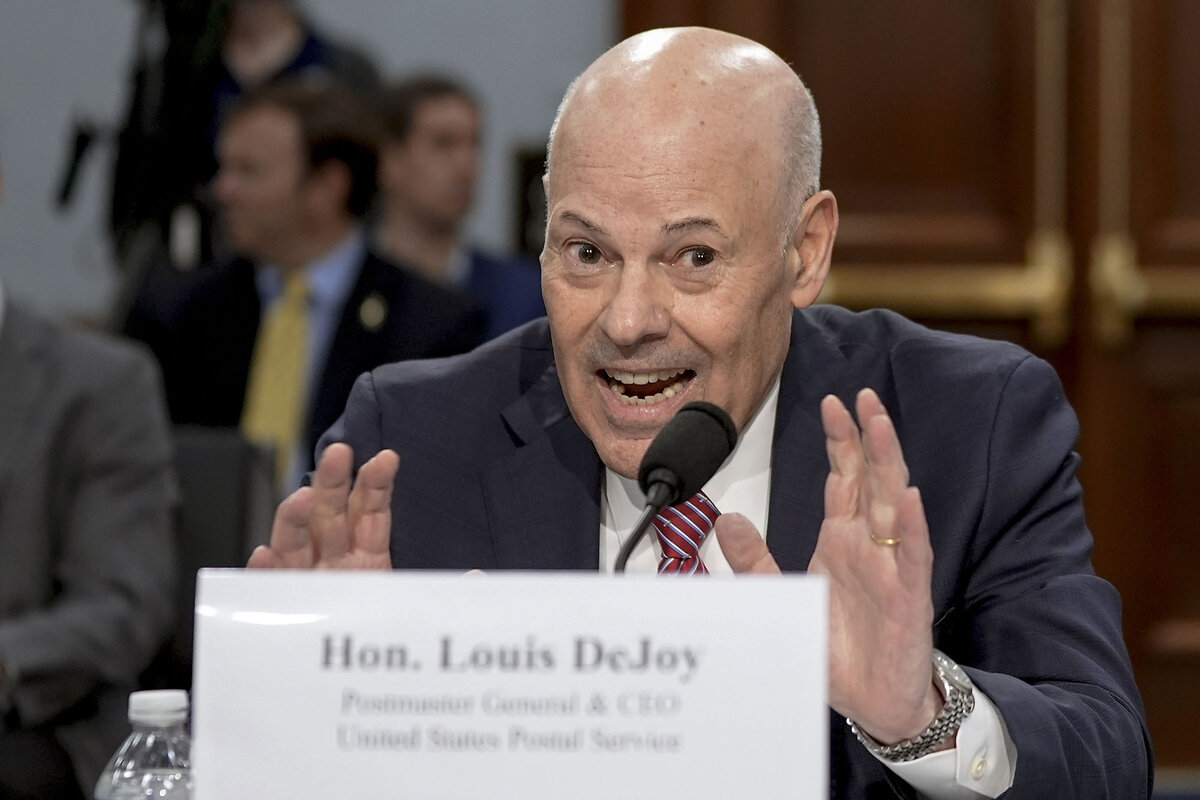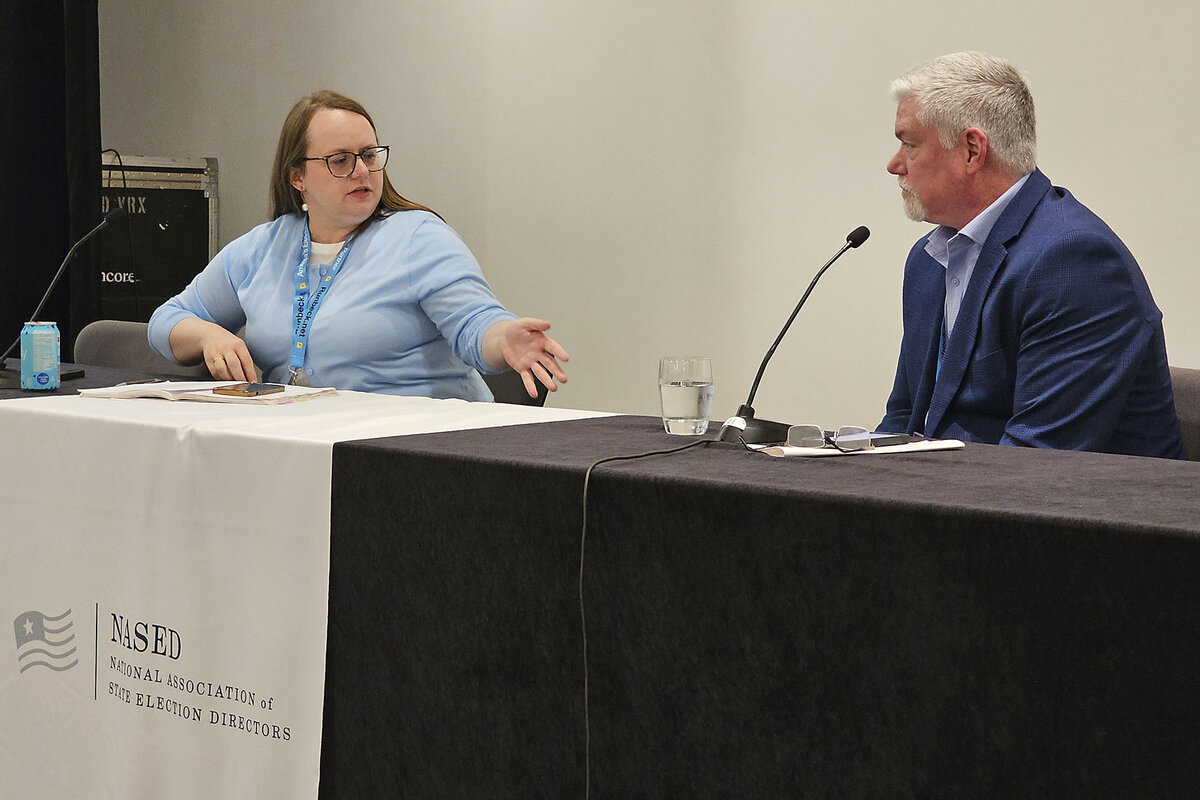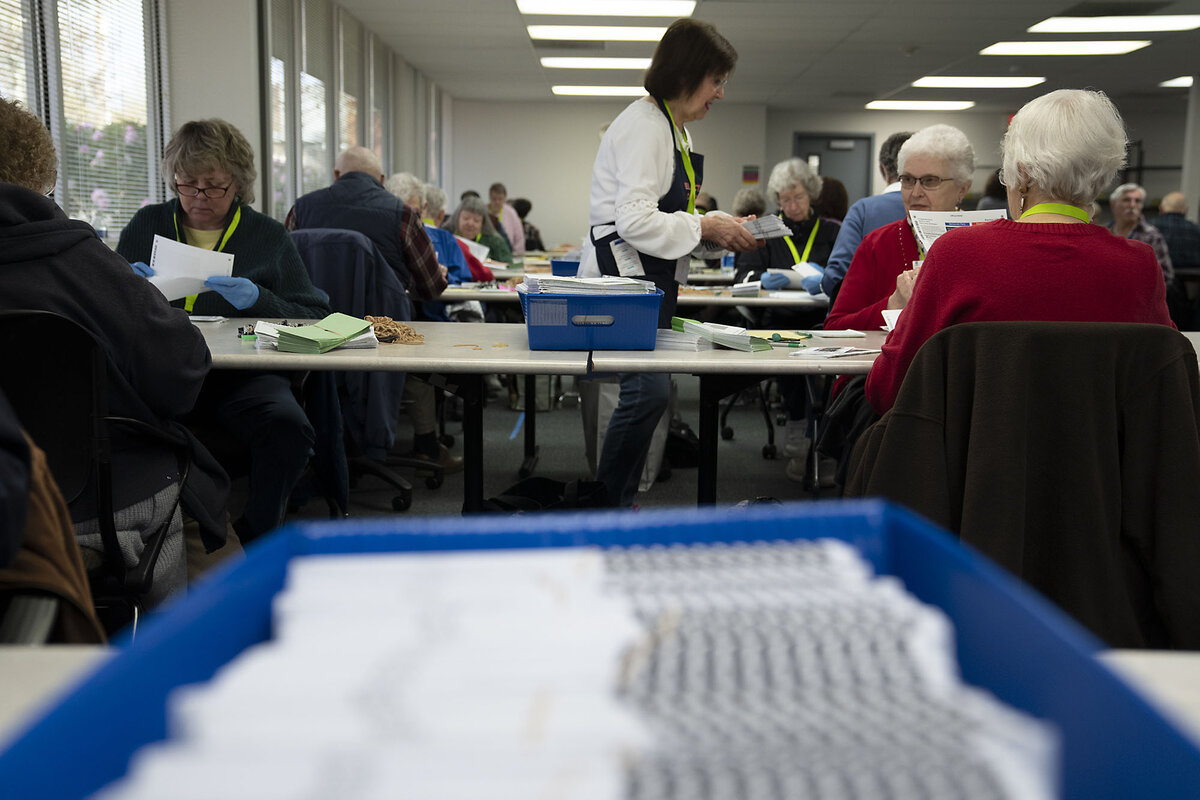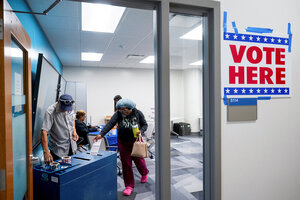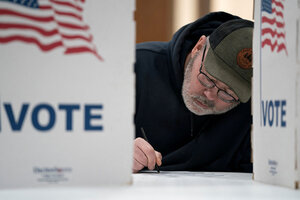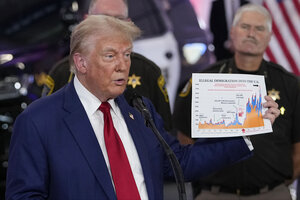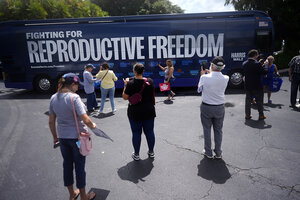Mail-in voting is a new norm. Is the US Postal Service up to the job?
Loading...
With less than three weeks until the election, mail-in voting is underway. But election officials from around the country have raised concerns about the U.S. Postal Service’s ability to handle election mail and deliver absentee and mail-in ballots in time to be counted.
In some places, election officials earlier this year flagged primary ballots that were postmarked on time, but received by election offices after the deadline to be counted. In other jurisdictions, election mail returned as undeliverable can automatically get voters placed on the inactive list – even if they properly addressed their ballots.
Election officials sounded the alarm in a letter last month, and local Postal Service workers point to a recent consolidation plan as the source of many problems.
Why We Wrote This
Delivering mail in a timely way is the essential function of the U.S. Postal Service. In a contentious election year with widely available mail-in voting, the stakes are raised. Officials are calling on the Postal Service to address reliability concerns.
“Over the course of the last year, election officials across the country have raised serious questions about ... the Postal Service’s ability to deliver election mail in a timely and accurate manner,” reads a Sept. 11 letter to Postmaster General Lewis DeJoy from the National Association of Secretaries of State and the National Association of State Election Directors.
“We have not seen improvement or concerted efforts to remediate our concerns,” the election officials wrote, citing concerns over processing facilities, lost or delayed election mail, and staff training. The issues remained unresolved after an Oct. 1 meeting with Mr. DeJoy, according to the National Association of Secretaries of State.
Nationwide, mail delays have grown even as access to voting by mail has increased. Nearly 97% of voters around the country will have at least one option to vote before election day, whether by in-person early voting or by mail, according to the Center for Election Innovation & Research.
Nationally, 36 states allow all voters to vote by mail; others allow mail-in voting with varying levels of restriction. Voting by mail spiked during the 2020 presidential election, held during the COVID-19 pandemic, and receded during the 2022 midterms.
Former President Donald Trump continues, without evidence, to criticize mail-in voting as widely fraudulent, although he and his campaign have also urged voters to make use of the method. A large partisan gap exists over voting by mail: 82% of Democrats support no-excuse mail-in voting, while 39% of Republicans feel the same way, according to Pew Research Center.
“There’s a lot more interest and scrutiny when it comes to a presidential election year, and there’s a growing popularity of voting absentee by mail. We just want to make sure we have a partner in the USPS,” says Steve Simon, Minnesota’s secretary of state.
Cutting services and delaying delivery
Around the country, mail carriers are already in the midst of a busy season, and in some places, are adapting to recent cost cutting measures. The Delivering for America Plan, initiated by the Postal Service leadership in 2021, worries many postal workers who say the changes will slow mail delivery, particularly in rural areas.
The consolidation plan is part of Mr. DeJoy’s 10-year strategy to reverse financial losses and begin making a profit, in part by cutting truck routes and reducing the number of packaging and distribution centers, instead using regional processing centers. That often means mail travels from suburban or rural areas into a city center and back again, adding delivery time.
In Oregon, part of the first phase of the rollout, postal workers say the delays are noticeable. “People are losing faith in the vote by mail, in the Postal Service here in Oregon,” says Jeremy Schilling, president of the Southern Oregon area local American Postal Workers Union. “Faith in the Postal Service is being diminished because this consolidation plan doesn’t make any sense.”
For decades, Medford, Oregon had a mail processing center for all the area post offices, says Mr. Shilling. Under the consolidation plan, mail is routed several hundred miles and a five-hour drive to Portland. If it’s local mail, as ballots are, it’s sent back to Medford after processing in Portland.
Critically, mail now isn’t guaranteed to be postmarked until it gets to Portland – which could be after midnight. For any ballot mailed on election day, that delay could make it invalid.
“Postal leadership’s solution seems to be more training,” says Porter McConnell, co-founder of the Save the Post Office Coalition. “To me, that misses the enormous upheaval at the management and sorting and delivery level.”
Delivery times in some areas are slower now than before the pilot began, even though the Postal Service is “grading themselves on a curve” after lowering benchmarks, like guaranteed delivery times, says Ms. McConnell.
In places where the changes have been implemented, such as parts of Wisconsin, on-time delivery dropped from above 90% to 70.5% for two-day first class mail.
According to the Office of the Inspector General, the Postal Service’s national on-time delivery average is 85.6%, nearly eight points below the target. In a breakdown of states, Wisconsin and Georgia, two key swing states, rank among the bottom 10 performers.
The Postal Service declined an interview request.
“Extraordinary measures”
As it has in years past, the Postal Service is implementing “extraordinary measures” for Election Day, including expedited handling, extra deliveries, and special pickups for election mail. The steps must begin by Oct. 21, the agency says, and in some cases will extend past the election.
“We have determined that implementing extraordinary measures two weeks before the election provides ample time,” wrote Mr. DeJoy in response to the letter from state officials. The officials had requested that the measures extend further in advance of Nov. 5.
These extraordinary measures – already in effect in some places – seem to be working so far, say postal workers in Iowa and Oregon. But they worry about what happens when the extra support lapses.
Many officials say that voting by mail is still safe and secure, but voters should mail in their ballots as far as possible in advance of the Nov. 5 election to avoid delays.
Generally, anyone voting by mail should do it at least a week in advance and track their ballot online, or return it by hand where possible, says Mr. Simons.
Local partnerships
Election and post office officials at both the local and national level need to communicate better about how to prioritize election mail, says Mr. Simons, who is also president of the National Association of Secretaries of State.
“We want to identify, and not conceal, to the public some of our concerns. On the other hand, we want to assure people who are voting by mail that their ballot will be transmitted,” says Mr. Simons. “We don’t want to needlessly alarm the public. Voting by mail is still safe and secure and a viable option.”
At this point in the 2024 election cycle, election officials are limited in what they can do to ease concerns about election mail, says Amy Cohen, executive director of the National Association of State Election Directors. But they can still explain the process to voters and urge them, if voting by mail, to do so as early as possible.
“It’s not a set-it-and-forget-it model of voting the way a lot of people think it is,” says Ms. Cohen. “You need to put a little more effort into tracking your ballot and being proactive.”






